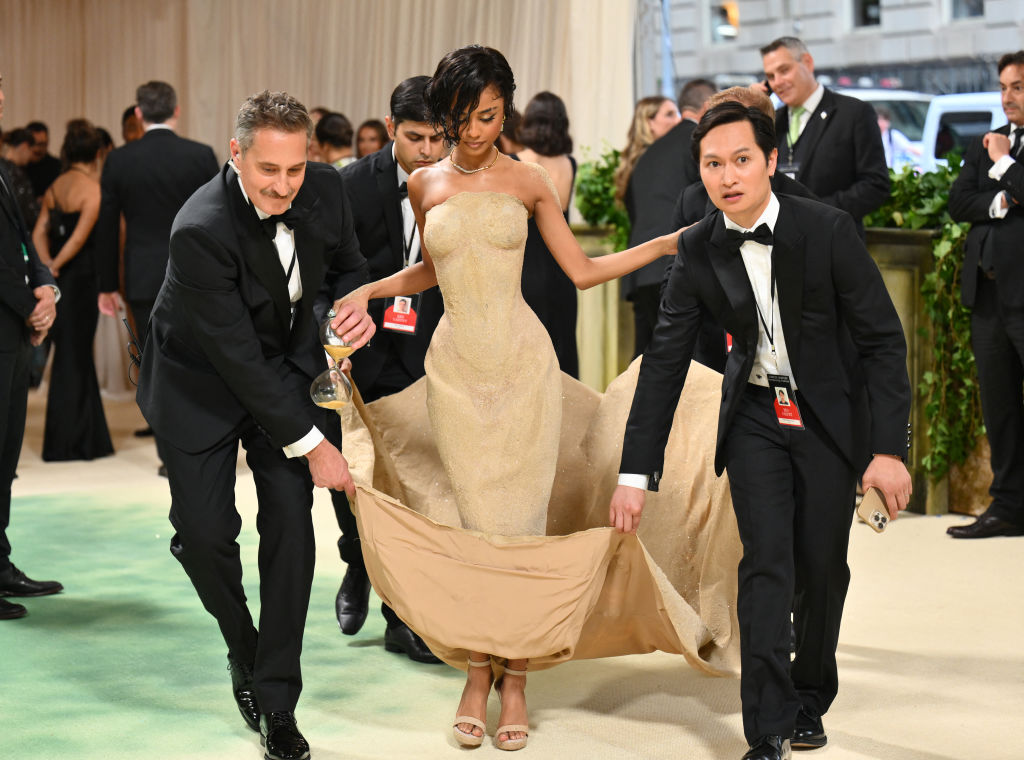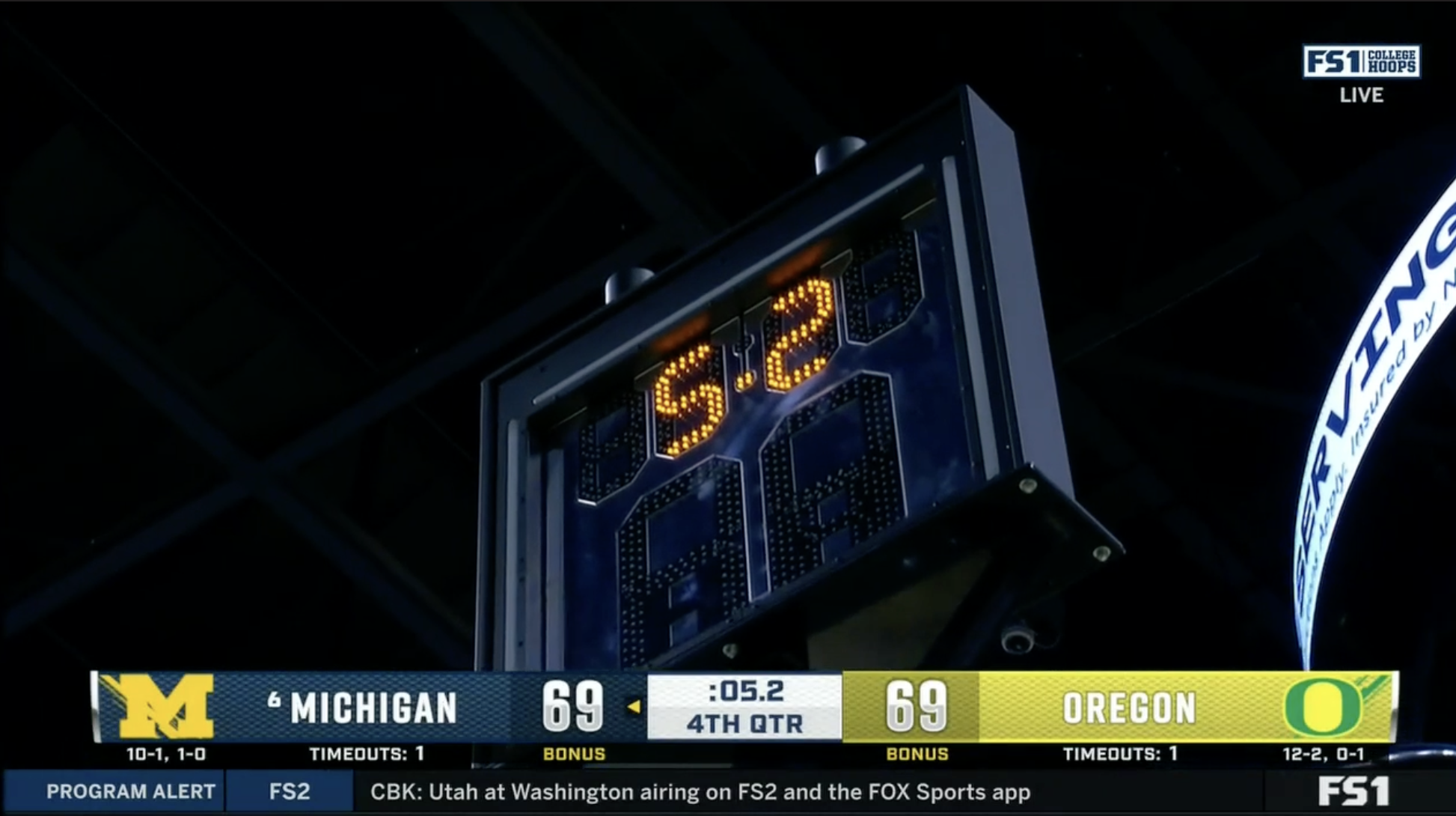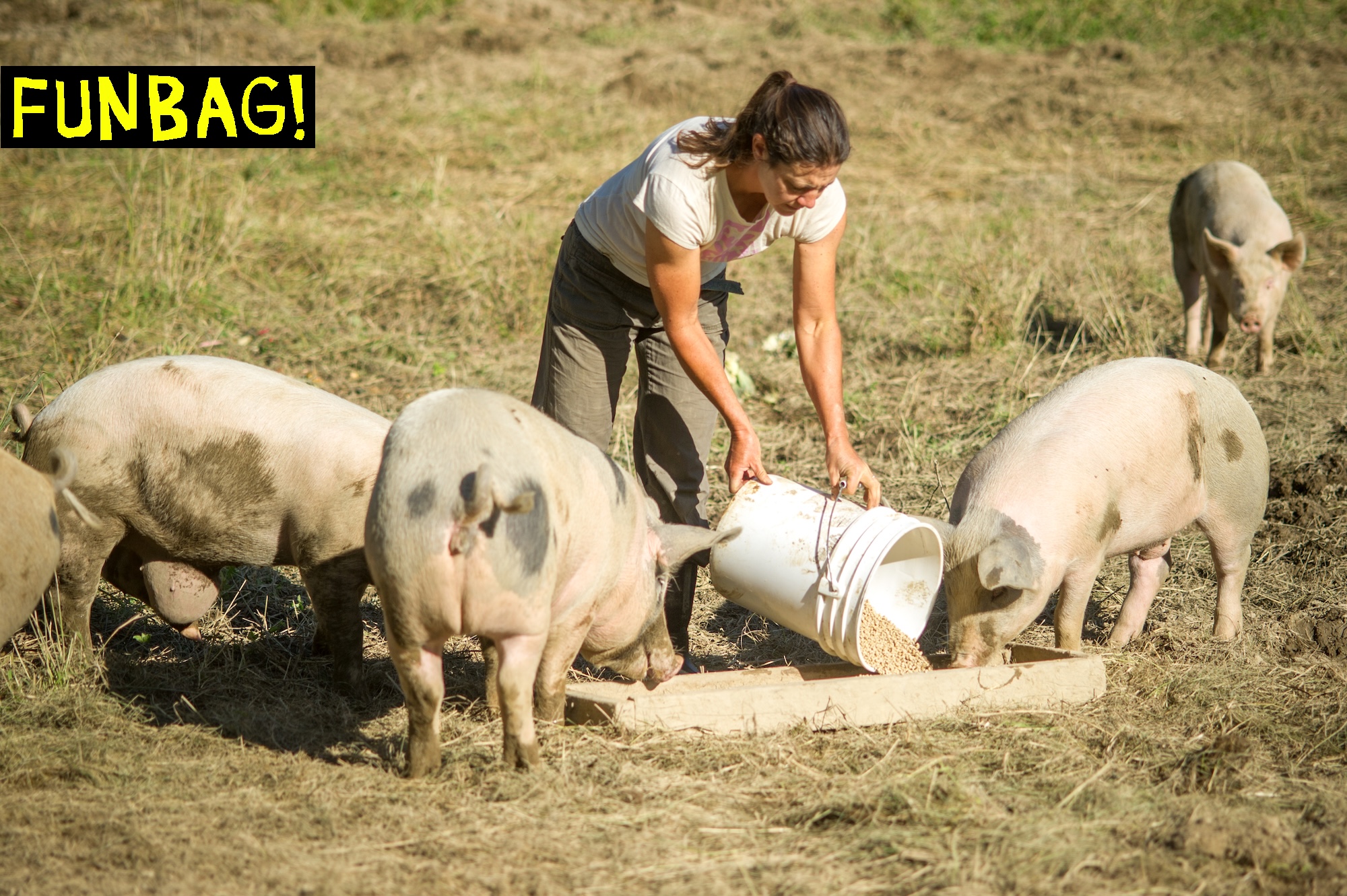A video by creator Haley Kalil from the Met Gala has been viewed more than 15 million times. It starts with a closeup of her face while she lip-syncs to a clip from Sofia Coppola’s Marie Antoinette: “Let them eat cake,” followed by the beginning of Le Tigre’s “Deceptacon.” The camera pans out to show her entire outfit, an elaborate flowered gown and headpiece. She looks like if Marie Antoinette rolled around in fondant cake flowers. Behind her, hordes of normals stand behind barricades hoping to catch a glimpse of a celebrity on fashion’s biggest night of the year.
This year’s Met Gala dress code was “The Garden of Time,” a reference to a 1962 short story by J.G. Ballard about a count and countess who live in an opulent villa surrounded by a wall. Inside the wall, in the garden of time, “the air seemed brighter, the sun warmer, while the plain was always dull and remote.” Every day, the count gazes out to the horizon to assess the progress of a huge army “composed of a vast throng of people, men and women, interspersed with a few soldiers in ragged uniforms, pressing forward in a disorganized tide” toward his property.
The count picks “time flowers” from the garden, glass roses that shrink in his hand and eventually melt like an ice cube. Every time he does that, the mob retreats. Time has turned back, and his way of life is preserved for another day or two.
To me, this is a story about anxiety: “Both of them knew the time garden was dying.” The count and his wife take a walk through the garden every evening, trying not to count the remaining flowers, commenting on how many there are left, as if attempting to comfort themselves.
The Met Gala is always a night for statements about image, celebrity identity, and fashion as art, and I like to observe it as an indicator of where the culture is, where it’s heading. Who gets invited, who chooses not to attend, who walks with whom, how the outfits are covered—all of it feeds into this celebrity machine that serves as a cipher for broader culture. I usually click through slideshows of the best dressed celebrities the morning after, but on Monday night I was home alone and decided to tune into Vogue’s livestream of the gala entrances. One of the most fascinating and successful interpretations of the Met Gala’s theme came from Tyla, who wore a sand sculpture gown by Balmain. She carried an hourglass clutch and also had sand flecked onto her shoulders. The garment was beautiful, impossible to walk in, and ephemeral. As a work of art that engages with a creative theme, it’s a masterpiece. But watching her being hoisted up the Met steps by strong men, I couldn’t help but think of the photos and videos I’ve seen of Gazan children coated in sand and dust, crying out in rubble.
For the last seven months, my social media feeds have been filled with unimaginable horrors. Every day, I see a desperate plea from Palestinians to help, to witness, to end the unrelenting bloodshed. Every day, I see new numbers that quantify the catastrophic loss of life on the other side of the world. And I’ve continued to go to work, make my little podcast, eat meals, go to the gym, and even laugh. I’ve watched 21 movies this year. I’ve read 13 books. I’ve made plans to move to a different city. I’ve slept.
It seems that the fundamental condition of modernity is learning to compartmentalize horrific truths about the world with the quotidian demands of existing within capitalism. For the last decade, I have seen and covered countless tragedies, unprecedented events, and horrors that made me think, “This is the worst it’s ever been.” And somehow, it gets worse. Nazis march proudly in a college town, encouraged by the president. My mom narrowly misses a mass shooting in a grocery store she regularly attends. Apocalyptic wildfires consume the Amazon. The White House teargasses protestors. A global pandemic kills millions.
Israel bombs Rafah and I shop for bras while on the phone with my friend. It’s frustrating because I’m looking for an ethically made bra, but I’m annoyed because the one I want is from a fast fashion retailer disguised as upmarket basics that advertises on a podcast I listen to. My friend tells me, “You’re so good about that. I’ve just accepted that everything I do is part of a harmful system.” And she’s not wrong. It sometimes feels like an impossible game of endless tradeoffs that never seem to add up to enough.
Nowhere is this felt more in our endless scrolling of our feeds, a place already weighted with anxiety. How could it not be? We were never meant to see this much, to hear this much, to peek into the bedrooms of so many strangers with the ease and randomness of a swipe across a glass screen.
A child has lost her limbs, a cow gives birth, a teenager has finished chemo, a cat is enjoying her last brush, those viral dress pants are restocked on TikTok shop, and she’s "looking for a man in finance with a trust fund, 6-5, blue eyes."
And at the beginning of May, nothing consumes the feeds and timelines like the Met Gala. The Gala has been a spectacle since the 1970s when Diana Vreeland was at its helm, turning what was once an annual benefit for the Met’s Costume Institute into a glamorous and exclusive affair where celebrities and socialites don their most outlandish interpretations of the evening’s dress code.
Since 1995, Anna Wintour has been the chairperson of the Gala and has continued to lean into the spectacle. To be invited to the Met Gala is to have made it within a certain set, and as easy as it might be to write off the whole affair as out-of-touch elites setting money on fire to stroke their own egos, it is also objectively true that the Gala is a reflection of a certain strata of our culture that will eventually rain down upon the masses, like Miranda Priestly’s cerulean monologue (a character modeled on Wintour herself). It is a place to see fashion as art, to celebrate a certain mode of creative expression only available to those who swim in the swirling cesspool of money, fame, and power. It is terrible, and it is beautiful.
But this cultural messaging moves both up and down the social ladder. This year’s theme felt especially ghoulish and deliberate because our world seems like it’s sliding further into the shit, and the opulence of the evening feels like something out of The Hunger Games. The morning of the Gala, when celebrities and influencers and others had their call times to prepare for their entrance, Israel widened its assault on Rafah. In New York, just a few subway stops away from The Met, Columbia students learned commencement was canceled, the latest move by the university’s administration in their blundering and brutal crackdown on protests. Two weeks ago, the Condé Union protested outside Wintour’s apartment in support of their fight for a new contract. Wintour even gave a gracious interview to one of the Vogue hosts on the live-stream without her trademark sunglasses, a courtesy she didn’t extend to Condé staffers a few months ago as she was informing them that their jobs would be eliminated.
I wish I knew how to hold all of this inside myself at the same time. I recognize a desire in myself to write it all off as indulgent and unimportant, but I can’t. I marvel at my brain’s ability to flip from aching to awestruck in the time it takes to swipe to the next video. It's necessary to acknowledge that you cannot subsist on a diet of tragedy alone. Satisfaction, however fleeting, can keep you sane. And yet, whenever I find respite, I feel the creeping pull of guilt and grief. There it is again: another marvel of a gown, another pristine styling choice, another feat of creative vision. I feel disgusted with myself for watching, but I also don’t think a life dedicated to justice without art is one worth living.
When we imagine ourselves within the Ballard short story, who are we? I think many of us would like to imagine we are members of the raging army, resolutely approaching the walled garden of the elite undeterred by routine setbacks. I’m not sure, though. When the time flowers finally run out, and the garden is nothing but decapitated glass stalks, the army finally scales the walls. But instead of enacting retribution, they find a dilapidated property forgotten by time. The beautiful lake is now empty, and the garden vines have overtaken the building’s walls. The count and countess are found hidden beneath overgrown bushes. They have turned to stone, and will exist frozen there, for the rest of time, holding a last rose in their hands.







